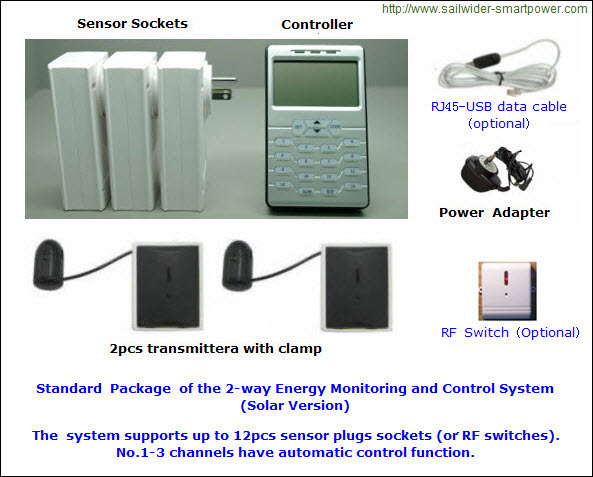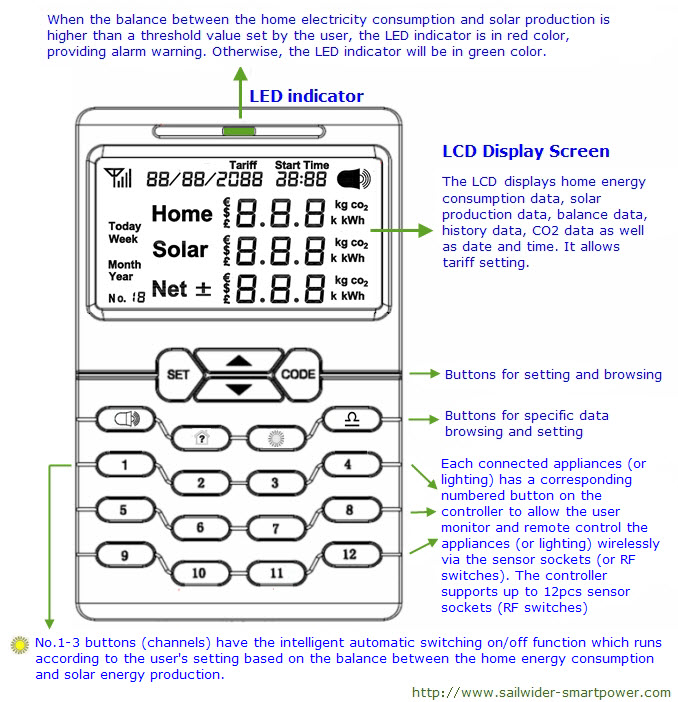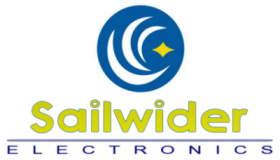|
|
|
|
|
|
|
|
Electricity Energy Monitoring and Control Systemwith Home Solar Plant Monitoring FunctionMore and more homeowners in the world have installed solar power system in their homes to generate clean power, reduce the electricity consumption cost and protect the environment as well. Our smart electricity energy monitoring and control system with home solar plant monitoring function belongs to our bi-directional (2-way) energy monitor and control system and is developed specially for households installed with home solar plant, providing a perfect solution for the home owners to monitor both the home electricity consumed in total and the energy produced by solar. Working Diagram of 2-way home energy monitoring and control system (Solar Version):
The system displays to the family members in real time the balance value between the house energy consumption and solar energy production. It allows the user to set intelligently automatic switching on/off function for targeted appliances according to the threshold balance value between the energy consumption and solar production. Furthermore, the controller provides wireless remote control of home electrical appliances when the family members want to respond to unsatisfactory balance data of home energy consumption and solar energy production. The user can also set the alarm function to make the LED light give different color according to the balance value between the home energy consumption and solar energy production. Our products are also being integrated into solar inverters and smart meters, that's what we are doing for some world brands. Standard Package of Energy Control System with Solar Power Monitoring Function
When the home electricity consumption is higher than the electricity production of home solar system, the controller of the electricity control system provides an alarm warning, reminding the family members to act to reduce the power consumption. The LCD screen of the controller display home power consumption data, production output by home solar system, balance data, cost data, history data. It also shows time and date. The system supports up to 12pcs sensor plug sockets, that means it can wirelessly monitor and control up to twelve connected electrical appliances.
Basic Introduction The wireless electricity monitoring and control system RCS-S09L with Home Solar Plant monitoring function is consisted by below parts: 1) 1pc controller with power adapter 2) 2pcs transmitters with sensor clamp 3) A number of sensor plug sockets 4) 1pc RJ45-USB data cable to provide computer link l The controller receives data from the transmitters and sensor plug sockets, displays the real time and history information on its LCD screen and sends powering on/off instruction to the sensor plug sockets. l 1pc of transmitter will be used to monitor the electricity output of the solar home plant, the other transmitter will be used to monitor the electricity consumption of the whole home. l The sensor plug sockets detect the electricity consumption of connected electrical appliances. The sockets detect the energy consumption data and send it to the controller. The sockets can be controlled remotely and wirelessly by the controller to switch on/off the connected electrical appliances. One system can support up to 12pcs sensor sockets. l The RJ45-USB data cable (available with software) serves to provide connection between the controller and the computer so that the user can view the real time data, the history data from the computer or remotely switch on/off electrical appliances. |
||||||||||
|
|
|
||||||||||||
|




